

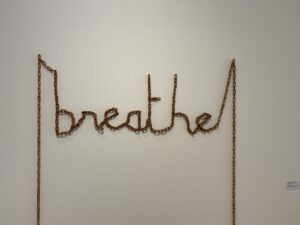
Humaira Abid (Seattle) Breathe, 2020 pine wood BIMA Permanent Art Collection, Gift of Cynthia Sears
Art urging us to think about our disrupted world is everywhere this spring.
“Breathe” the current group show (until May 30) at the Bainbridge Island Museum of Art (free, open daily!) addresses civil rights issues in every work by twenty-one artists.
Humaira Abid created a hand carved wooden chain for the title ”Breathe.” It suggests both entrapment and escape here, but how many other references are contained in that one word!
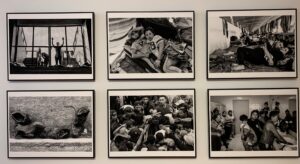
Linda Wolf (Bainbridge Island) Caravan Asylum 2018 digital photo prints Courtesy of the Artist
In Linda Wolf’s black and white photographs, Caravan Asylum we see people surviving the huge challenges and risks of travel to the US in hopes of a better life (a belief that has surged since Biden came into office).
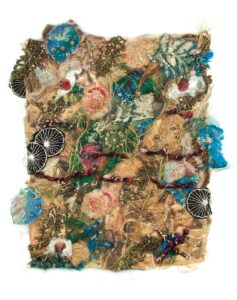
Carletta Carrington Wilson Field Notes: “I was plowin long and a thinkin”, 2017, fiber mixed media, 16.3”h x 13.3”w, Courtesy of the Artist, photo credit: Inye Wokoma
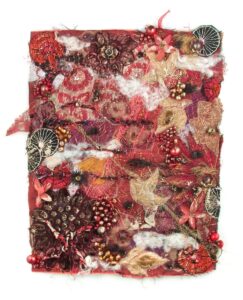
Carletta Carrington Wilson, Field Notes:” hear that bull whip cryin”, 2017, fiber mixed media, 16.3”h x 13.3”w, Courtesty of the Artist, photo credit: Inye Wokoma
Nearby “Field Notes,” mixed media fiber collages by Carletta Carrington Wilson, quote from formerly enslaved persons in the subtitles, such as “I was plowin long and a thinkin.” Embedded in the textiles is an “x”, honoring the fact that ninety percent of slaves were illiterate.
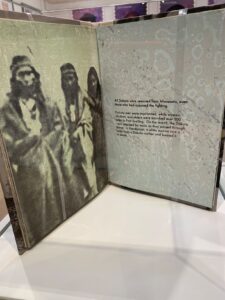
Fred Hagstrom (St. Paul, MN) When Men Are Hungry, 2014 letterpress on paper, edition #21 of 36 Cynthia Sears Artist’s Book Collection
Throughout the exhibition selections from the extraordinary book art collection of Cynthia Sears address potent issues: Native American displacement (Fred Hagstrom);
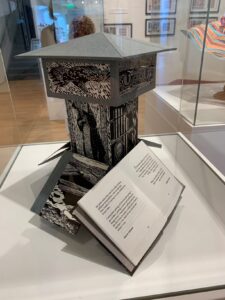
Beth Theilen (Chathum, NY) The Tower, 2006-2007 linoleum prints and mixed media; writing and binding by prisoners at San Quentin State Prison in California; edition #13 of 30 Cynthia Sears Artist’s Book Collection
writing and art by prisoners (Beth Thielen); anti-semitism (Diane Jacobs); white supremacism in a Klan car rally in 1965 that led to the murder of civil rights worker Viola Liuzza (Tyler Starr);
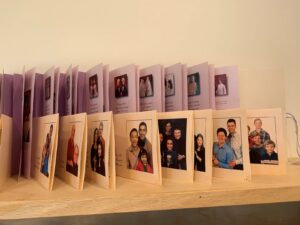
Cheri Gaulke & Sue Maberry Marriage Matters, 2005 color laser printed flag book; edition #29 of 100 Cynthia Sears Artist’s Book Collection
gay marriage (Cheri Gaulke and Sue Maberry). Each artist brilliantly concentrates a huge topic in an experimental book format.
Roger Shimomura and Michelle Kumata address Japanese Internment.
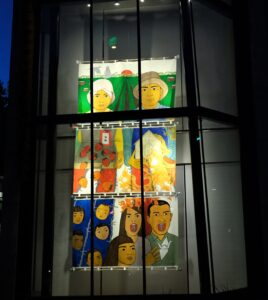
Michelle Kumata (Seattle), Song for Generations, 2019, acrylic on canvas, nylon webbing, bamboo, fabric, 17’h x 8’/6”w, Courtesy of the Artist
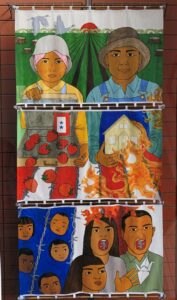
study for mural, gicle print, 10 x 16″ collection Susan Platt
Kumata’s Song for Generations, 2019 hangs in the multistoried window of the museum. At the top are two farmers, one holds strawberries, the other a house in flames, below are two adults with painful barbed wire in their mouths, and children in the lower left born in internment (as was Kumata’s mother).
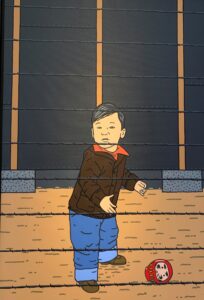
Roger Shimomura American Alien #2, 2006, acrylic on canvas Collection of Cynthia Sears, Promised Gift to BIMA
Shimomura’s poignant portrait of an American Alien and the anxiety of waiting in Nightwatch continues his life-long exploration of the theme of internment. Given the upsurge in hate crimes against Asians, these works remind us the long history of Asian abuse in the US.
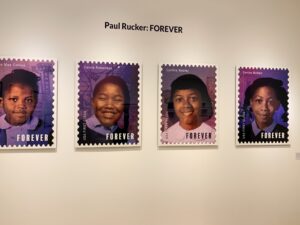
Paul Rucker, Forever, installation
Also on display is Paul Rucker’s “Forever” homage to Civil Rights martyrs in the form of “forever” stamps for the post office with biographies of people such as Medgar Evers and Edwin Pratt. In large scale are the four young girls killed in the church bombing in Birmingham Alabama in 1963.
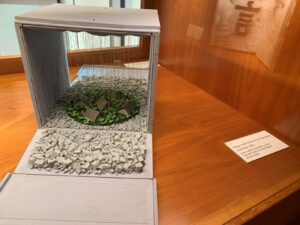
Peggy Smith-Venturi, Quiet Rain, 2016, handcrafted from fabric, wood, clay and various mixed media, one of a kind, in exhibition “Water” Cynthia Sears Artist’s Book Collection
More artists books appear in a separate show “Water” and upstairs are Kimberly Trowbridge’s landscapes based on her residency at the Bloedel Reserve. In short, you can see an astonishing breadth of issues and styles at the Bainbridge Museum of Art, many from the museum’s collection.
The Henry Art Gallery at the University of Washington also challenges us with difficult topics.
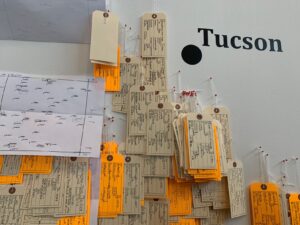
Undocumented Migration Project, Hostile Terrain 94(detail), photograph by Susan Platt . A participatory art exhibition directed by UCLA anthropologist Jason de Leon in more than 130 cities, it focuses on the deaths that have occurred almost daily since 1994 as a direct result of the Border Patrol policy known as “Prevention Through Deterrence” (PTD)
In the lobby “Hostile Terrain, HT94),” from the Undocumented Migration Project, outlines a border in Arizona with hundreds of tags hanging on it – volunteers documented each person who died crossing the inhospitable desert with the condition of the body and location. That act means that participants feel these deaths directly as do we.
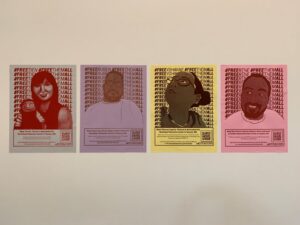
La Resistencia project to make the voices of detainees heard Left to Right Tien Ho, Ruben Vera Perez, Yohanne Eugenio, Rene Ruben Ramirez-Alatorre.
Nearby, a project by La Resistencia gives us access through QR codes to appalling stories of the detainees in the Northwest Detention Center. Here is their call to action “Free Them All,” with template letters to Patty Murray, Adam Smith, Jay Inslee, Tacoma Mayor Victoria Woodards, ICE field office director Nathalie Asher.
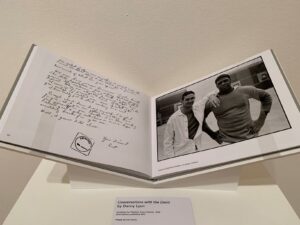
“Illustrating Injustice: The Power of Print” curated by Nina Bozicnik and Ann Poulson provocatively pairs Danny Lyons’ prison photographs (Conversations with the Dead (1971) with prints by Honoré Daumier lambasting the legal system of 19th century France.
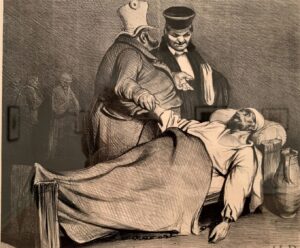
Honoré Daumier Celui là, on peut le mettre en liberté, 1834, lithograph “This one here, he can be set free, He’s no longer dangerous” Henry Art Gallery
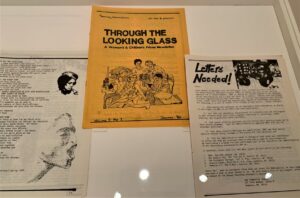
The show also includes moving prison newsletters from the Washington Prison History Project.
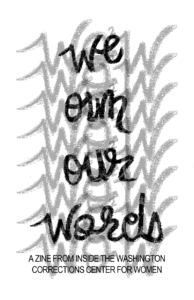
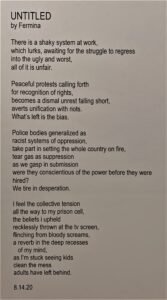
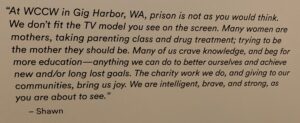
Commissioned by the Henry “We Own Our Words” is a contemporary zine project with deeply expressive essays and poems by women in the Washington Corrections Center for Women. You can download a digital copy here.
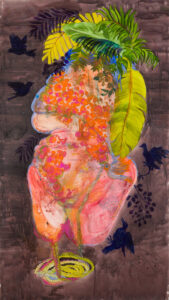
Firelei Báez, The Right to Opacity , 2013. Acrylic on vellum. Collection of Josef Vascovitz and Lisa Goodman. Courtesy of the artist and James Cohan, New York.
By the same dynamic curators “Plural Possibilities and the Female Body” explores the female body beyond the reductive binaries of gender and fixed ideas of beauty. The breathtaking selection of artists ranges from Ana Mendieta and Kiki Smith to Zanele Muholi and Mickelene Thomas. Presiding over the gallery is a lush painting by Dominican Republic artist Firelei Báez The Right to Opacity that fuses Saartjie Baartman (the so-called “Hottentot Venus”) with ciguapas, a mythical fearless woman of the forest.
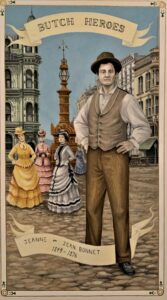
Ria Brodell, Jeanne or Jean Bonnet, 1849-1876, from the Butch Heroes series 2012, gouache on paper
One of the most fascinating works was this work by Ria Brodell from the Butch Heroes series. It also connects to an upcoming exhibition at the Washington State History Museum, “Crossing Boundaries, Portraits of a Transgender West, May 29 – December 12, 2021 as well as Donald Byrd’s recent amazing piece choragraphed for the Pacific Northwest Ballet, “And the skies are not cloudy all day”
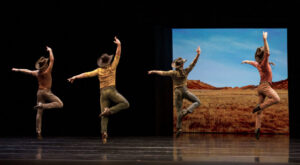
For those who like the bizarre, don’t miss “Bambitchell: Bugs and Beasts Before the Law.” A video highlights animal trials in medieval and early modern Europe based on a 1906 book Criminal Prosecution and Capital Punishment of Animals. I watched the trial of a cock who laid an egg and was tried for sodomy. Perhaps the larger context could be that because of climate change we are putting animals to death all the time without any trial.
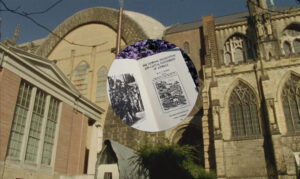
Bambitchell. Video still from Bugs & Beasts Before the Law . 2019. Courtesy of the artists.
And finally, “Viewpoints: A Dialogue Between Jean-François Millet and Jeanne Dunning” a single gallery exhibition juxtaposes Jean Francois Millet’s images of women working (at home) in the 19th century to a video of a woman’s head being covered with cake frosting by Jeanne Dunning! Go see it to understand it.
So something for everyone! The Henry exhibitions end on May 9. It is FREE until the end of June although limited hours Saturday and Sunday 10 – 5 with a reservation.
And since I went there they have already opened two more exhibitions Gary Simmons: the Engine Room and Elaine Cameron Weir, Star Club Redemption Booth. Be sure to get there as soon as possible!!